Popular categories
Looking for a yarn?

100% Alpaca
from 3.65 € /50g
Order DROPS Needles & Hooks
Clicking the ORDER button will redirect you to Mallia Kouvaria - pleko.gr. website
The yarn cost is calculated from the pattern’s smallest size and the yarn’s cheapest product type. Looking for an even better price? You might find it on the DROPS Deals!
Mister Bean
Teddy knitted in “Alpaca”.
Change language:
English (UK/cm), Greece- English (UK/cm), Greece
- Česky
- Dansk
- Deutsch
- Eesti keel
- English (UK/cm)
- English (US/in)
- Español
- Français
- Íslenska - not translated
- Italiano
- Magyar
- Nederlands
- Norsk
- Polski
- Português
- Suomi
- Svenska
- English (UK/cm), Bulgaria
- English (UK/cm), Croatia
- English (UK/cm), Latvia
- English (UK/cm), Lithuania
- English (UK/cm), Romania
- English (UK/cm), Slovenia
- Česky, Slovakia
Materials: DROPS Alpaca from Garnstudio
200 g colour no. 607, light brown mix
+ a remainder of dark brown for eyes and snout.
+ cotton wool for filling
DROPS double pointed needle size 5 mm
-------------------------------------------------------
Alternative Yarn – See how to change yarns here
Yarn Groups A to F – Use the same pattern and change the yarn here
Yarn usage using an alternative yarn – Use our yarn converter here
-------------------------------------------------------
You might also like...

100% Alpaca
from 3.65 € /50g
Order DROPS Needles & Hooks
Clicking the ORDER button will redirect you to Mallia Kouvaria - pleko.gr. website
The yarn cost is calculated from the pattern’s smallest size and the yarn’s cheapest product type. Looking for an even better price? You might find it on the DROPS Deals!
Pattern instructions
Inc. tips: Inc as follows: Make a yo, on the returning row twist and knit the yo to avoid a hole.
Teddy: The teddy is knitted with 3 threads of Alpaca. Make the legs first, then the body and arms and finally the head and then the ears.
Legs: Cast on 9 sts on needle size 5 mm with 3 threads of Alpaca and distribute sts evenly on 3 needles. Insert a marking thread at the beg of round.
Round 1-6: Knit in stocking sts, inc 3 sts evenly on each round – see Inc. tips above = 27 sts.
Round 7-11: Knit in stocking sts.
Round 12: *Slip a st as if to knit, K2 tog psso* , repeat 3 times, knit the remaining 18 sts in stocking sts = 21 sts in total.
Round 13-16: Knit in stocking sts
Round 17: K2, inc. 1 st, K19 = 22 sts.
Round 18-19: Knit in stocking sts
Round 20: K2, inc. 1 st, K20 = 23 sts.
Round 21-22: Knit in stocking sts.
Round 23: K3, inc. 1 st, K21 = 24 sts.
Continue in stocking sts until the piece measures 12 cm.
Now cast off for the thigh as follows:
K6 sts and put them on a thread (= the middle of the leg). Put the remaining sts on 1 needle and finish the leg in stocking sts back and forth on needle as follows: Knit until 1 st left and turn. Slip a st as if to knit and continue until 1 st left, turn, slip a st as if to knit and continue until 2 sts left, turn, slip a st as if to knit and continue until 2 sts left, turn, slip a st as if to knit and continue until 3 sts left, turn, slip a st as if to knit and continue until 3 sts left, turn slip a st as if to knit and K all sts. There are still 24 sts remaining incl the 6 sts from the thread.
Put the sts from the thread back on the needle and distribute the sts over 3 needles, knit 1 round of stocking sts but to make sure the 3 sts each side of the 6 sts from the thread become tight enough, knit them as follows: Pick 1 st up from previous round and K this one tog with the st on the needle (this means the sts are knitted double) – repeat for all 3 sts each side. Knit 1 round as follows: K20, cast off 2 sts (= the inside of the leg), K2 = 22 sts. Pull the opening tog at the bottom of the foot. Put the piece aside and knit the other leg, but knit the last round as follows: K8, cast off 2 sts (= the inside of the leg), K14 = 22 sts.
Body: Put both legs tog on the 3 needles, at the same time cast on 2 new sts in between the legs at the front and at the back = 48 sts. Distribute the sts so the beg of the round will be at the mid back of the teddy (it is a good idea to insert a marking thread). Measure from here onwards!
Round 1-2: Stocking sts
Round 3: K 14, K2 tog, K16, K2 tog, K14.
Round 4: K 14, K2 tog, K14, K2 tog, K14 = 44 sts
Continue in stocking sts until the piece measures 9 cm.
Next round: K6, K2 tog, K2 tog, K2, K2 tog, K2 tog, K2 tog, K8, K2 tog, K2 tog, K2 tog, K2, K2 tog, K2 tog, K6 = 34 sts
Next round: K2, K2 tog, K2 tog, K1, cast off 4 sts ( “armhole”), K1, K2 tog, K6, K2 tog, K1, cast off 4 sts (= “armhole”), K1, K2 tog, K2 tog, K2, then K the first 5 sts on round to the ”armhole”. This leaves 10 sts for the back and 10 sts for the front, continue to knit each piece separately.
Back piece: Knit in stocking sts, at the same time K the first 2 sts and then the last 2 sts tog (seen from the RS), repeat the dec on every other row until 4 sts left. Put these sts on a thread.
Front piece:
Knit as the back piece.
Right Arm:
Cast on and knit as the leg until round 16. Continue in stocking sts over all sts until the piece measures 12 cm.
Next round: K6, cast off 2 sts (= mid under arm), K 13 sts.
Continue back and forth on needle. K the the first 2 sts and then the last 2 sts tog (seen from the RS) on every other row until 5 sts left. Put the sts on a thread. Pull the opening tog at the bottom of the arm with the casting on thread, sew tight. Knit the other arm.
Left Arm:
Cast on and knit as right arm until the piece measures 12 cm.
Next round: K16, cast off 2 stitches for underarm, K3 sts.
Continue and finish as right arm.
Head: Put the remaining sts from the back piece, arm, front piece and arm (= 18sts) on the 3 needles as follows: Distribute the sts so the round begins mid back (it is a good idea to insert a marking thread).
Round 1: Stocking sts
Round 2: Inc 6 sts evenly distributed on round = 24 sts
Round 3-6: Inc 3 sts evenly distributed on each round.
Round 7-8: Inc 9 sts evenly distributed on each round = 54 sts. Continue in stocking sts until the piece measures 7 cm
Next round: K21 sts, *slip a st as if to knit, K2 tog, psso*, repeat from *-* a total of 4 times, K21 sts = 46 sts
Next round: K21 sts, slip a st as if to knit, K1, psso, slip a st as if to knit, K1, psso, K21 sts = 44 sts.
Next round: *K2, K2 tog*, repeat from *-* a total of 4 times, K12, *K2 tog, K2*, repeat from *-* a total of 4 times = 36 sts
Next round: K7, K3 sts and then put them on a safety pin (= sts for the ear), K16 , K3 sts and then put them on a safety pin (= sts for the ear) K7. On the following round pick up 1 st behind each st from the safety pin (sts are now both on the safety pin and the needle). Knit in stocking sts until the piece measures approx. 14 cm. K all sts tog 2 by 2 = 18 sts. K all sts tog 2 by 2 one more time, cut the thread and pull through the remaining 9 sts.
Ear: Pick up 3 sts from one safety pin. Knit the ear in garter sts throughout (= knit all rows).
Row 1: K1, make a yo, K1, make a yo, K1 = 5 sts
Row 2: K the 5 sts
Row 3: K1, *make a yo, K1*, repeat from *-* until finish = 9 sts.
Row 4: K the 9 sts.
Row 5: K1, *make a yo, K1*, repeat from *-* until finish = 17 sts. Continue to knit in garter sts until the ear measures approx. 6 cm.
Next row: *K all sts tog 2 by 2 and finish with K1, K all sts on the returning row*, repeat from *-* 3 times = 3 sts left on row. Cast off. Fill the ear with cotton wool and sew it tight. Repeat for the other safety pin.
Assembly: Fill the teddy with cotton wool through the hole underneath the arm. Sew the opening in between the legs. Sew the eyes, the snout and the mouth with a remainder of darker brown or black. Sew the arms onto the body, pull the arms down so they will be sewn to the body approx 4 rounds underneath the first casting off for the “armhole” (this is done to give the teddy a bit of stomach).
This pattern has been corrected. Click here to see the correction/s.
Right Arm:
Cast on and knit as the leg until round 16. Continue in stockinette sts over all sts until the piece measures 12 cm.
Next round: K6, cast off 2 sts (= mid under arm), K 13 sts.
Continue back and forth on needle. K the the first 2 sts and then the last 2 sts tog (seen from the RS) on every row from RS until 5 sts left. Put the sts on a holder. Pull the opening tog at the bottom of the arm with the casting on thread, sew tight.
Left Arm:
Cast on and knit as right arm until the piece measures 12 cm.
Next round: K16, cast off 2 stitches for underarm, K3 sts.
Continue and finish as right arm.
What can you do with our patterns? You can share DROPS patterns online, using the pattern original picture, materials, name and number. But you are NOT ALLOWED to reproduce the complete pattern digitally in any way. Yarn stores are welcome to use the DROPS pattern database to promote the sale of our assortment. You can print out our patterns, make as many copies as you’d like. The only thing we ask is that you don't make any changes / additions to the original printed document. And that the patterns according to the DROPS philosophy are given out to the consumers for free. Editorials that wish to publish our patterns in printed books or magazines can contact us for more information. The sale of garments based on DROPS patterns is permitted as long as they are sold as single items or per order. Further commercial use of the patterns is not permitted. It has to be clearly stated that the garment is made based on a design from DROPS DESIGN. The use of clothing labels of which DROPS DESIGN forms part is conditioned by the inclusion of the following text: “A DROPS DESIGN made by …..”. The use of DROPS photos for marketing purposes/sales is only permitted in connection with the use/sale of DROPS products. The photos may not be cut or edited and the logo should be clearly visible.
We reserve the right to withdraw the permission for use of our patterns at any time, notwithstanding the reason.
Each of our patterns has specific tutorial videos to help you.
These step-by-step tutorials might also help you:
Why is the knitting/crochet tension so important?
Knitting tension is what determines the final measurements of your work, and is usually measured per 10 x 10 cm. It is provided like so: number of stitches in width x number of rows in height - eg: 19 stitches x 26 rows = 10 x 10 cm.
The knitting tension is very individual; some people knit/crochet loosely while others work tightly. You adjust the knitting tension with the needle size, which is why the suggested needle size is only meant as a guide! You need to adjust this (up or down) to ensure that YOUR knitting tension matches the knitting tension provided in the pattern. If you work with a different knitting tension than provided you will have a different yarn consumption, and your work will have different measurements than what the pattern suggests.
The knitting tension also determines which yarns can replace each other. As long as you achieve the same knitting tension you can replace one yarn with another.
See DROPS lesson: How to measure your tension/gauge
See DROPS video: How to make a gauge tension swatch
How do I know how many balls of yarn I need?
The required amount of yarn is provided in grams, eg: 450 g. To calculate how many balls you’ll need you first need to know how many grams are in 1 ball (25g, 50g or 100g). This information is available if you click on the individual yarn quality on our pages. Divide the amount required with the amount of each ball. For example, if each ball is 50g (the most common amount), the calculation will be as follows: 450 / 50 = 9 balls.
Can I use a different yarn than what the pattern suggests?
The important thing when changing from one yarn to another is that the knitting/crochet tension remains the same. This is so that the measurements of the finished piece will be the same as on the sketch provided. It is easier to achieve the same knitting tension using yarns from the same yarn group. It is also possible to work with multiple strands of a thinner yarn to achieve the knitting tension of a thicker one. Please try our yarn converter. We recommend you to always work a test swatch.
Please NOTE: when changing yarn the garment might have a different look and feel to the garment in the photo, due to individual properties and qualities of each yarn.
See DROPS lesson: Can I use a different yarn than the one mentioned in the pattern?
What are the yarn groups?
All our yarns are categorised into yarn groups (from A to F) according to thickness and knitting tension – group A contains the thinnest yarns and group F the thickest. This makes it easier for you to find alternative yarns to our patterns, should you wish to switch yarn. All yarns within the same group have a similar knitting tension and can easily replace each other. However, different yarn qualities have different structures and properties which will give the finished work a unique look and feel.
How do I use the yarn calculator?
At the top of all our patterns you’ll find a link to our yarn calculator, which is a helpful tool should you wish to use a different yarn than suggested. By filling in the yarn quality you wish to replace, the amount (in your size) and number of strands, the calculator will present good alternative yarns with the same knitting tension. Additionally it will tell you how much you’ll require in the new qualities and whether you’ll need to work with multiple strands. Most skeins are 50g (some are 25g or 100g).
If the pattern is worked with multiple colours, every colour will have to be calculated separately. Similarly, if the pattern is worked with several strands of different yarns (for example 1 strand Alpaca and 1 strand Kid-Silk) you will have to find alternatives for each, individually.
Why do you show discontinued yarns in the patterns?
Since different yarns have different qualities and textures we have chosen to keep the original yarn in our patterns. However, you can easily find options among our available qualities by using our yarn calculator, or simply pick a yarn from the same yarn group.
It is possible that some retailers still have discontinued yarns in stock, or that someone has a few skeins at home that they would like to find patterns for.
The yarn calculator will provide both alternative yarn as well as required amount in the new quality.
What size should I knit?
If you think it's hard to decide what size to make, it can be a good idea to measure a garment you own already and like the size of. Then you can pick the size by comparing those measures with the ones available in the pattern's size chart.
You'll find the size chart at the bottom of the pattern.
See DROPS lesson: How to read size chart
Why do I get the wrong knitting tension with the suggested needle size?
The needle size provided in the pattern serves only as a guide, the important thing is to follow the knitting tension. And since knitting tension is very individual, you will have to adjust the needle size to ensure that YOUR tension is the same as in the pattern – maybe you’ll have to adjust 1, or even 2 needle sizes, up or down to achieve the correct tension. For this, we recommend that you work test swatches.
Should you work with a different knitting tension than the one provided, the measurements of the finished garment might deviate from the measurement sketch.
See DROPS lesson: How to measure your tension/gauge
See DROPS video: How to make a tension/gauge swatch
Why is the pattern worked top-down?
Working a garment top-down provides more flexibility and room for personal adjustment. For example it is easier to try the garment on while working, as well as making adjustments to length of yoke and shoulder caps.
The instructions are carefully explaining every step, in the correct order. Diagrams are adjusted to the knitting direction and are worked as usual.
How do I work according to a knitting diagram?
The diagram depicts all rows/rounds, and every stitch seen from the right side. It is read from bottom to top, from right to left. 1 square = 1 stitch.
When working back and forth, every other row is worked from the right side and every other row is worked from the wrong side. When working from the wrong side, the diagram will have to be worked reversed: from left to right, knit stitches are purled, purl stitches are knit etc.
When working in the round every round is worked from the right side and the diagram are worked from right to left on all rounds.
See DROPS lesson: How to read knitting diagrams
How do I work according to a crochet diagram?
The diagram depicts all rows/rounds, and every stitch seen from the right side. It is worked from bottom to top, from right to left.
When working back and forth every other row is worked from the right side: from right to left and every other row is worked from the wrong side: from left to right.
When working in the round, every row in the diagram are worked from the right side, from right to left.
When working a circular diagram you start in the middle and work your way outwards, counter clockwise, row by row.
The rows usually start with a given number of chain stitches (equivalent to the height of the following stitch), this will either be depicted in the diagram or explained in the pattern.
See DROPS lesson: How to read crochet diagrams
How do I work several diagrams simultaneously on the same row/round?
Instructions for working several diagrams after each other on the same row/round, will often be written like so: “work A.1, A.2, A.3 a total of 0-0-2-3-4 times". This means you work A.1 once, then A.2 is worked once, and A.3 is repeated (in width) the number of times provided for your size – in this case like so: S = 0 times, M = 0 times, L=2 times, XL= 3 times and XXL = 4 times.
The diagrams are worked as usual: begin with the first row in A.1, then work the first row in A.2 etc.
See DROPS lesson: How to read knitting diagrams
See DROPS lesson: How to read crochet diagrams
Why are the sleeves shorter in larger sizes?
The total width of the garment (from wrist-to-wrist) will be larger in the larger sizes, despite the actual sleeves being shorter. The larger sizes have longer sleeve caps and wider shoulders, so there will be a good fit in all sizes.
Where on the garment is the length measured?
The measurement sketch/schematic drawing provides information regarding the full length of the garment. If it’s a jumper or a jacket the length is measured from the highest point on the shoulder closest to the neckline, and straight down to the bottom of the garment. It is NOT measured from the tip of shoulder. Similarly, the length of yoke is measured from the highest point on the shoulder and down to where yoke is split into body and sleeves.
On a jacket measures are never taken along bands, unless specifically stated. Always measure inside band stitches when measuring the length.
See DROPS lesson: How to read a schematic drawing
What is a repeat?
Diagrams are often repeated on the round or in height. 1 repeat is the diagram the way it appears in the pattern. If it says to work 5 repeats of A.1 in the round, then you work A.1 a total of 5 times after/next to each other in the round. If it says to work 2 repeats of A.1 vertically/in height you work the entire diagram once, then begin again at the start and work the entire diagram one more time.
Why does the piece start with more chain stitches than it’s worked with?
Chain stitches are slightly narrower than other stitches and to avoid working the cast-on edge too tight, we simply chain more stitches to begin with. The stitch count will be adjusted on the following row to fit the pattern and measurement sketch.
Why increase before the rib edge when the piece is worked top-down?
The rib edge is more elastic and will contract slightly compared to, for example, stocking stitch. By increasing before the rib edge, you avoid a visible difference in width between the rib edge and the rest of the body.
Why increase in the cast-off edge?
It’s very easy to cast off too tightly, and by making yarn overs while casting off (and simultaneously casting these off) you avoid a too tight cast off edge.
See DROPS video: How to bind off with yarn overs (yo)
How do I increase/decrease on every 3rd and 4th row/round alternately?
To achieve an even increase (or decrease) you can increase on, for example: every 3rd and 4th row alternately, like so: work 2 rows and increase on the 3rd row, work 3 rows and increase on the 4th. Repeat this until the increase is complete.
See DROPS lesson: Increase or decrease 1 st on every 3rd and 4th row alternately
How can I work a jacket in the round instead of back and forth?
Should you prefer to work in the round instead of back and forth, you may of course adjust the pattern. You’ll need to add steeks mid-front (usually 5 stitches), and follow the instructions. When you would normally turn and work from the wrong side, simply work across the steek and continue in the round. At the end you’ll cut the piece open, pick up stitches to work bands, and cover the cut edges.
See DROPS video: How to knit steeks and cut open
Can I work a jumper back and forth instead of in the round?
Should you prefer to work back and forth instead of in the round, you may of course adjust the pattern so you work the pieces separately and then assemble them at the end. Divide the stitches for the body in 2, add 1 edge stitch in each side (for sewing) and work the front and back pieces separately.
See DROPS lesson: Can I adapt a pattern for circular needles into straight needles?
Why is the pattern slightly different than what I see in the photo?
Pattern repeats can vary slightly in the different sizes, in order to get the correct proportions. If you’re not working the exact same size as the garment in the photo, yours might deviate slightly. This has been carefully developed and adjusted so that the complete impression of the garment is the same in all sizes.
Make sure to follow instructions and diagrams for your size!
How do I make a women’s size garment into a men’s size one?
If you have found a pattern you like which is available in women’s size it’s not very difficult to convert it to men’s size. The biggest difference will be the length of sleeves and body. Start working on the women size that you think would fit across the chest. The additional length will be worked right before you cast off for the armhole/sleeve cap. If the pattern is worked top-down you can add the length right after the armhole or before the first decrease on sleeve.
Regarding additional yarn amount, this will depend on how much length you add, but it is better with a skein too many than too few.
How do I prevent a hairy garment from shedding?
All yarns will have excess fibres (from production) that might come off as lint or shedding. Brushed yarns (ie hairier yarns) have more of these loose, excess fibres, causing more shedding.
Shedding also depends on what is worn under or over the garment, and whether this pulls at the yarn fibres. It’s therefore not possible to guarantee that there will be no shedding
Below are some tips on how to get the best result when working with hairier yarns:
1. When the garment is finished (before you wash it) shake it vigorously so the looser hairs come off. NOTE: do NOT use a lint roller, brush or any method that pulls at the yarn.
2. Place the garment in a plastic bag and put it in your freezer - the temperature will cause the fibres to become less attached to each other, and excess fibres will come off easier.
3. Leave in the freezer for a few hours before taking it out and shaking it again.
4. Wash the garment according to the instructions on the yarn label.
Why does my garment pill?
Pilling is a natural process that happens to even the most exclusive of fibers. It's a natural sign of wear and tear that is hard to avoid, and that is most visible in high friction areas of your garment like a sweater's arms and cuffs.
You can make your garment look as new by removing the pilling, using a fabric comb or a pill/lint remover.
In the meantime, you can read the questions and answers that others have left to this pattern or join the DROPS Workshop on Facebook to get help from fellow knitters/crocheters!
Mister Bean |
|
 |
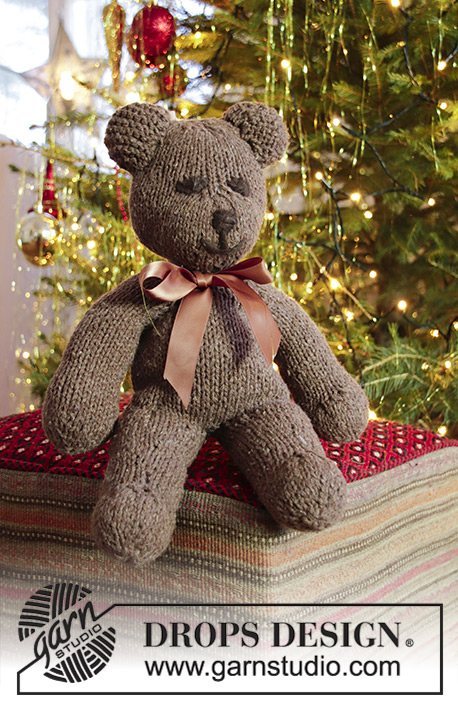 |
Teddy knitted in “Alpaca”.
DROPS Baby 11-28 |
|
|
Knitting tension: 16 sts x 21 rows on needles size 5 mm with 3 threads of Alpaca in stocking sts = 10 x 10 cm. Inc. tips: Inc as follows: Make a yo, on the returning row twist and knit the yo to avoid a hole. Teddy: The teddy is knitted with 3 threads of Alpaca. Make the legs first, then the body and arms and finally the head and then the ears. Legs: Cast on 9 sts on needle size 5 mm with 3 threads of Alpaca and distribute sts evenly on 3 needles. Insert a marking thread at the beg of round. Round 1-6: Knit in stocking sts, inc 3 sts evenly on each round – see Inc. tips above = 27 sts. Round 7-11: Knit in stocking sts. Round 12: *Slip a st as if to knit, K2 tog psso* , repeat 3 times, knit the remaining 18 sts in stocking sts = 21 sts in total. Round 13-16: Knit in stocking sts Round 17: K2, inc. 1 st, K19 = 22 sts. Round 18-19: Knit in stocking sts Round 20: K2, inc. 1 st, K20 = 23 sts. Round 21-22: Knit in stocking sts. Round 23: K3, inc. 1 st, K21 = 24 sts. Continue in stocking sts until the piece measures 12 cm. Now cast off for the thigh as follows: K6 sts and put them on a thread (= the middle of the leg). Put the remaining sts on 1 needle and finish the leg in stocking sts back and forth on needle as follows: Knit until 1 st left and turn. Slip a st as if to knit and continue until 1 st left, turn, slip a st as if to knit and continue until 2 sts left, turn, slip a st as if to knit and continue until 2 sts left, turn, slip a st as if to knit and continue until 3 sts left, turn, slip a st as if to knit and continue until 3 sts left, turn slip a st as if to knit and K all sts. There are still 24 sts remaining incl the 6 sts from the thread. Put the sts from the thread back on the needle and distribute the sts over 3 needles, knit 1 round of stocking sts but to make sure the 3 sts each side of the 6 sts from the thread become tight enough, knit them as follows: Pick 1 st up from previous round and K this one tog with the st on the needle (this means the sts are knitted double) – repeat for all 3 sts each side. Knit 1 round as follows: K20, cast off 2 sts (= the inside of the leg), K2 = 22 sts. Pull the opening tog at the bottom of the foot. Put the piece aside and knit the other leg, but knit the last round as follows: K8, cast off 2 sts (= the inside of the leg), K14 = 22 sts. Body: Put both legs tog on the 3 needles, at the same time cast on 2 new sts in between the legs at the front and at the back = 48 sts. Distribute the sts so the beg of the round will be at the mid back of the teddy (it is a good idea to insert a marking thread). Measure from here onwards! Round 1-2: Stocking sts Round 3: K 14, K2 tog, K16, K2 tog, K14. Round 4: K 14, K2 tog, K14, K2 tog, K14 = 44 sts Continue in stocking sts until the piece measures 9 cm. Next round: K6, K2 tog, K2 tog, K2, K2 tog, K2 tog, K2 tog, K8, K2 tog, K2 tog, K2 tog, K2, K2 tog, K2 tog, K6 = 34 sts Next round: K2, K2 tog, K2 tog, K1, cast off 4 sts ( “armhole”), K1, K2 tog, K6, K2 tog, K1, cast off 4 sts (= “armhole”), K1, K2 tog, K2 tog, K2, then K the first 5 sts on round to the ”armhole”. This leaves 10 sts for the back and 10 sts for the front, continue to knit each piece separately. Back piece: Knit in stocking sts, at the same time K the first 2 sts and then the last 2 sts tog (seen from the RS), repeat the dec on every other row until 4 sts left. Put these sts on a thread. Front piece: Knit as the back piece. Right Arm: Cast on and knit as the leg until round 16. Continue in stocking sts over all sts until the piece measures 12 cm. Next round: K6, cast off 2 sts (= mid under arm), K 13 sts. Continue back and forth on needle. K the the first 2 sts and then the last 2 sts tog (seen from the RS) on every other row until 5 sts left. Put the sts on a thread. Pull the opening tog at the bottom of the arm with the casting on thread, sew tight. Knit the other arm. Left Arm: Cast on and knit as right arm until the piece measures 12 cm. Next round: K16, cast off 2 stitches for underarm, K3 sts. Continue and finish as right arm. Head: Put the remaining sts from the back piece, arm, front piece and arm (= 18sts) on the 3 needles as follows: Distribute the sts so the round begins mid back (it is a good idea to insert a marking thread). Round 1: Stocking sts Round 2: Inc 6 sts evenly distributed on round = 24 sts Round 3-6: Inc 3 sts evenly distributed on each round. Round 7-8: Inc 9 sts evenly distributed on each round = 54 sts. Continue in stocking sts until the piece measures 7 cm Next round: K21 sts, *slip a st as if to knit, K2 tog, psso*, repeat from *-* a total of 4 times, K21 sts = 46 sts Next round: K21 sts, slip a st as if to knit, K1, psso, slip a st as if to knit, K1, psso, K21 sts = 44 sts. Next round: *K2, K2 tog*, repeat from *-* a total of 4 times, K12, *K2 tog, K2*, repeat from *-* a total of 4 times = 36 sts Next round: K7, K3 sts and then put them on a safety pin (= sts for the ear), K16 , K3 sts and then put them on a safety pin (= sts for the ear) K7. On the following round pick up 1 st behind each st from the safety pin (sts are now both on the safety pin and the needle). Knit in stocking sts until the piece measures approx. 14 cm. K all sts tog 2 by 2 = 18 sts. K all sts tog 2 by 2 one more time, cut the thread and pull through the remaining 9 sts. Ear: Pick up 3 sts from one safety pin. Knit the ear in garter sts throughout (= knit all rows). Row 1: K1, make a yo, K1, make a yo, K1 = 5 sts Row 2: K the 5 sts Row 3: K1, *make a yo, K1*, repeat from *-* until finish = 9 sts. Row 4: K the 9 sts. Row 5: K1, *make a yo, K1*, repeat from *-* until finish = 17 sts. Continue to knit in garter sts until the ear measures approx. 6 cm. Next row: *K all sts tog 2 by 2 and finish with K1, K all sts on the returning row*, repeat from *-* 3 times = 3 sts left on row. Cast off. Fill the ear with cotton wool and sew it tight. Repeat for the other safety pin. Assembly: Fill the teddy with cotton wool through the hole underneath the arm. Sew the opening in between the legs. Sew the eyes, the snout and the mouth with a remainder of darker brown or black. Sew the arms onto the body, pull the arms down so they will be sewn to the body approx 4 rounds underneath the first casting off for the “armhole” (this is done to give the teddy a bit of stomach). |
|
|
Have you made this or any other of our designs? Tag your pictures in social media with #dropsdesign so we can see them! Do you need help with this pattern?You'll find tutorial videos, a Comments/Questions area and more by visiting the pattern on garnstudio.com. © 1982-2024 DROPS Design A/S. We reserve all rights. This document, including all its sub-sections, has copyrights. Read more about what you can do with our patterns at the bottom of each pattern on our site. |
|
With over 40 years in knitting and crochet design, DROPS Design offers one of the most extensive collections of free patterns on the internet - translated to 17 languages. As of today we count 309 catalogues and 11624 patterns translated into English (UK/cm). 11624
We work hard to bring you the best knitting and crochet have to offer, inspiration and advice as well as great quality yarns at incredible prices! Would you like to use our patterns for other than personal use? You can read what you are allowed to do in the Copyright text at the bottom of all our patterns. Happy crafting!







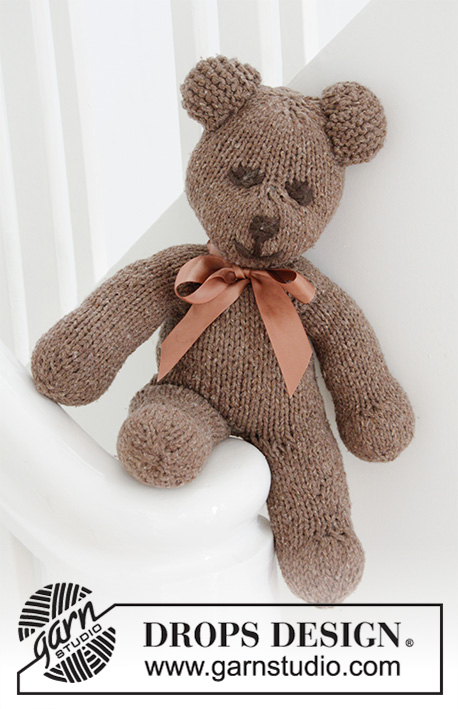
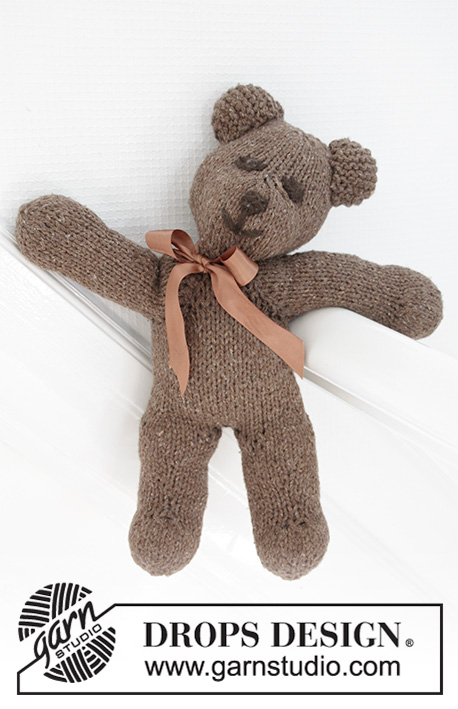
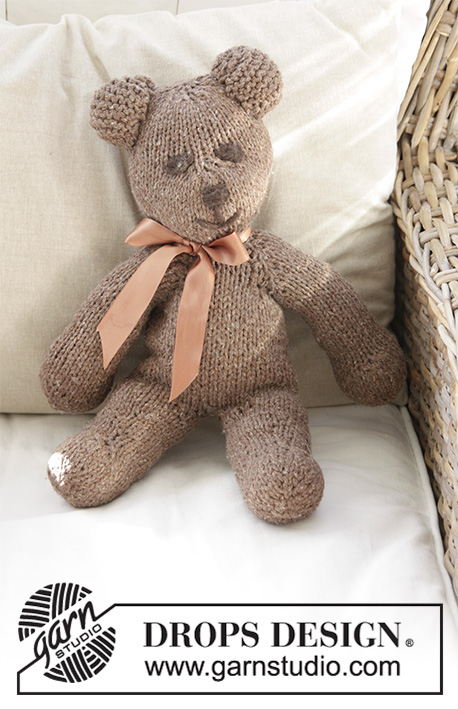


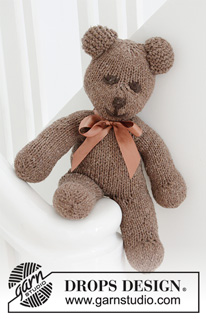
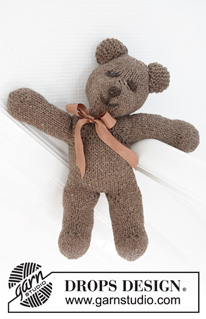
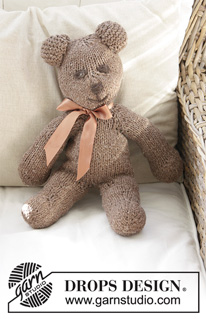

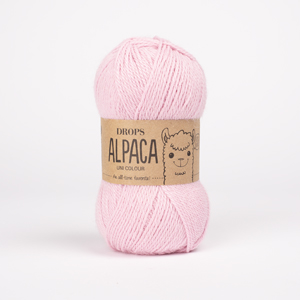






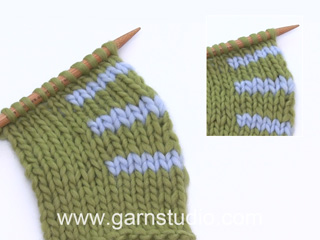
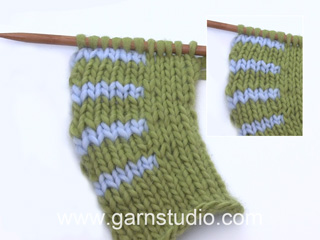
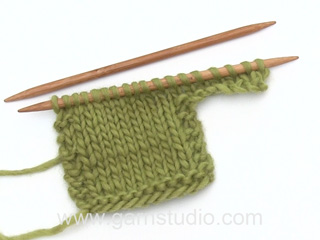

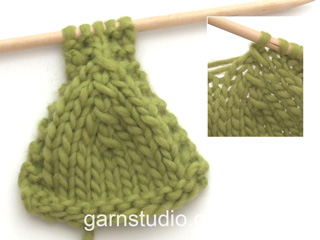


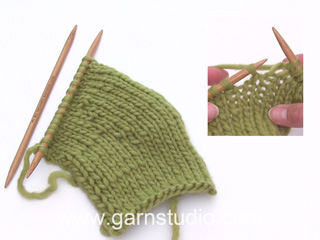


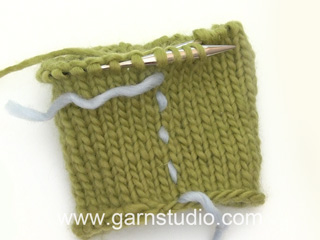
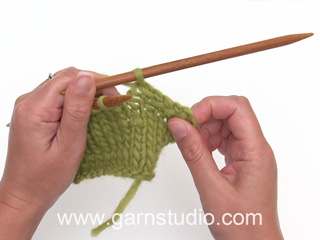
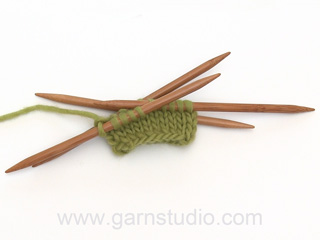
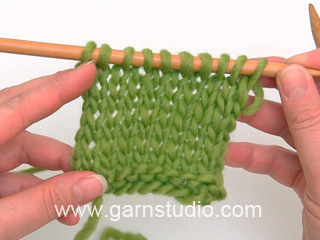

























Comments / Questions (43)
What does “use 3 threads of alpaca” mean?
12.06.2024 - 12:37DROPS Design answered:
Dear Mrs Humphries, this means you work with 1 strand from 3 different balls = 3 strands DROPS Alpaca (not only 1). Happy knitting !
12.06.2024 - 16:31Frage ❓ich habe ein bein gestrickt ist das richtig ,der oberschenkel befindet dich hinten zum fuss. Beinabnehmen 3 maschen in mitte bein.
27.04.2023 - 19:11DROPS Design answered:
Liebe Frau Villiger, die Runden beginnen immer an der gleichen Stelle, dh wenn man die Abketten Runde strickt sind die stillgelegten 6 Maschen die ersten von den 20 Maschen zu stricken, die 2 letzten maschen der Runde sind vor den 6 Maschen, die stillgelegt waren = vordere Mitte. Beim nächsten Bein stricken Sie die 8 ersten Maschen (= die stillgelegten 6 Maschen + die 2 nächsten). Viel Spaß beim stricken!
28.04.2023 - 11:40Veľmi milý návod, dobre sa podľa neho pracovalo. Ja som plietla zo zvyškov DROPS Safran, spletala som rôznofarebné priadze, tiež to vyzerá dobre.
22.09.2022 - 07:55Me gusta mucho, pero si hubiera un vídeo mejor , sería excelente
04.05.2022 - 20:51How many balls of Drops alpaca are required for this pattern please?
19.01.2022 - 01:07DROPS Design answered:
Hi Joanne, Drops Alpaca comes in balls of 50 g, so you need 4 balls for this teddy bear. Happy knitting!
19.01.2022 - 07:58I would like instructions for embroidering the eyes and moth please...I need a video or step by step with pictures pleasekeek
07.11.2021 - 12:32DROPS Design answered:
Dear Maria, we're sorry but there is no video available for this and we don't make specific tutorials on request. Happy knitting!
07.11.2021 - 13:48Al comenzar las piernas es necesario montar los 9 puntos en 3 agujas (en cada una) o pueden montarse en una aguja circular? Creo que es mas facil. Un saludo
23.10.2021 - 10:19DROPS Design answered:
Hola Yeshenia, puedes montar 9 pts en una aguja circular con la técnica magic loop, pero son pocos pts y es algo más complicado. También puedes trabajar en redondo con 2 agujas circulares: https://youtu.be/AnqX3UuYMhE. Por otro lado, se montan 9 pts en total y se pasan 3 pts a cada aguja, no se montan 9 pts en cada una. Por lo que en cualquiera de los casos, el nº total de pts debería ser 9.
24.10.2021 - 12:35Hey you I knitted the teddy bear and it turned out really lovely, everything is clear and suitable except for the length of the head, which according to the instructions should be knitted 14 cm, meaning from the neck so I understand - and it looks very long. Is it possible to get a clear explanation? Thanks in advance Jordana.
17.06.2021 - 11:38DROPS Design answered:
Dear Mrs Zidon, the head should measure 14 cm in height before knitting stitches together 2 by 2 2 times, ie before the end of head, but this measurement is matching the tension/finished measurements. If you are working with another tension, you will have to adapt the length desired. Happy knitting!
17.06.2021 - 13:16Bonjour, Je voudrai éviter de tricoter le nounours avec 3 fils ..que me conseillez vous comme laine ? J'ai tenté votre convertisseur qui m'indique de vous questionner directement. Merci
25.05.2021 - 10:39DROPS Design answered:
Bonjour Mme Marimar, 3 fils du groupe A correspondent en général à 1 fil du groupe D, vous pourriez tricoter ce nounours en Melody pour avoir le même échantillon. Bon tricot!
25.05.2021 - 14:07Ik heb de poten af en ik moet aan het lijf beginnen. Het is echter voor mij zeer onduidelijk op welke plek de 2 nieuwe steken die tussen de poten moeten komen precies gemaakt moeten worden. Kunt u dat duidelijker uitleggen. ( met name met betrekking tot de afgekante steken. Het zou fijn zijn als dit op een tekening is terug te zien!!! Als dat niet kant hoop ik op een duidelijkere uitleg.
20.12.2020 - 22:10